Comet G3 (ATLAS) looks breathtaking above future home of world's largest telescope (photos)
The "Great Comet of 2025" put on a show above some of the world's darkest skies.
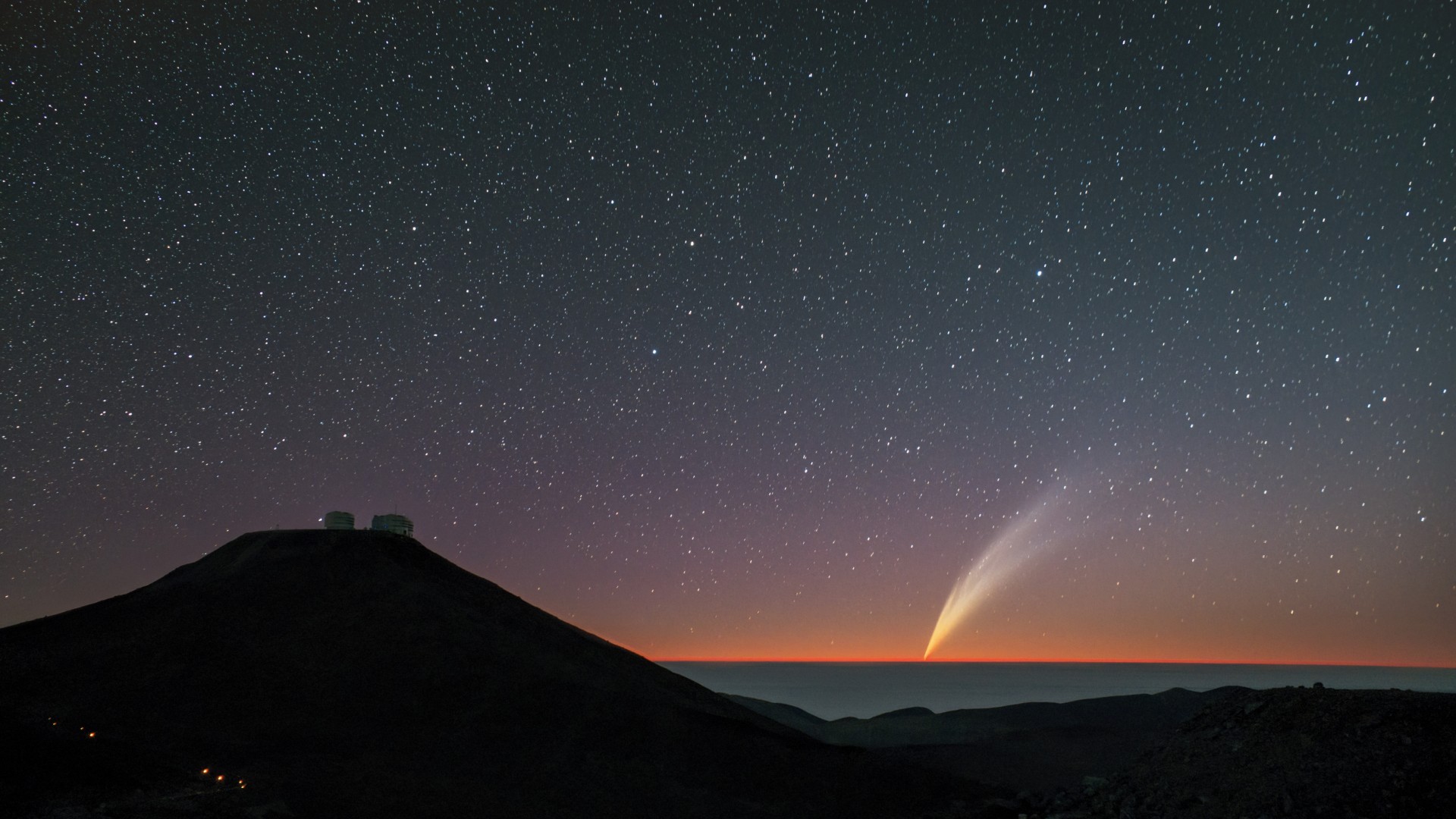
A brilliant comet waved its tail above the site of the world's largest telescope as it lit up the night sky last month.
Comet C/2024 G3 (ATLAS) soared through the starry skies above the European Southern Observatory's (ESO) Paranal Observatory in Chile, home to the Very Large Telescope and future site of the Extremely Large Telescope (ELT), which is currently under construction. When completed, the ELT will be the world's largest telescope capable of observing the cosmos in visible light.
Veteran comet hunters have called G3 (ATLAS) the "Great Comet of 2025" due to its daytime visibility and spectacular nighttime sightings. In these gorgeous photos from the Paranal Observatory, it's not hard to see why.
Photographer Yuri Beletsky caught comet G3 (ATLAS) looking " almost like a watercolor painting," ESO wrote in a statement accompanying Beletsky's photo. The scene was captured on Jan. 19 beside one of the auxiliary telescopes that contribute to ESO's Very Large Telescope Interferometer, a system of four telescopes working in unison.
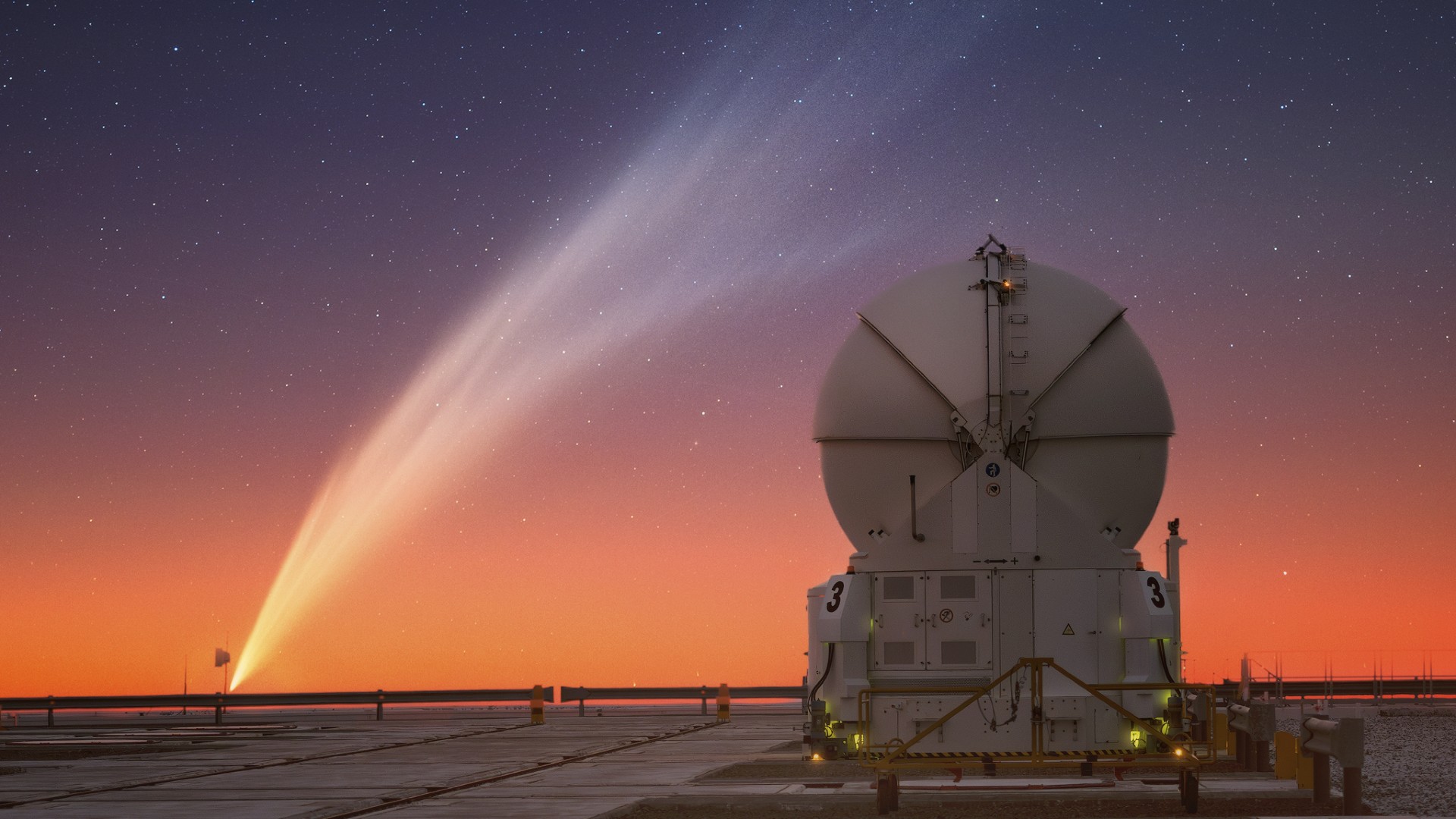
ESO fellow Abel de Burgos Sierra caught a colorful capture of comet C/2024 G3 (ATLAS) shining among background stars on Jan. 29. In the photo, particles of dust and gases create multiple tails as they are pushed away from the comet's nucleus by solar wind and radiation blowing from the sun, ESO wrote in a statement alongside the photograph.
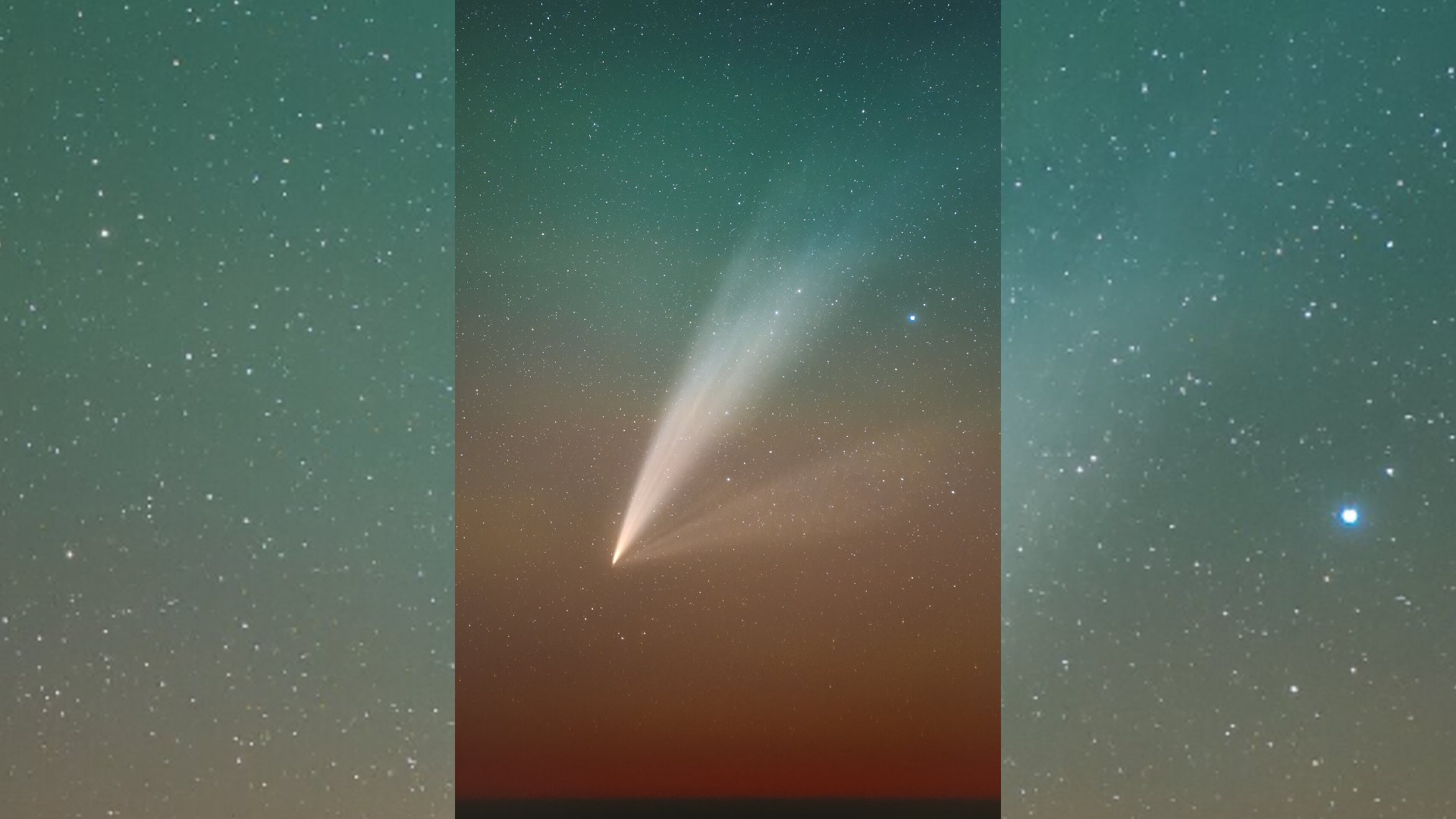
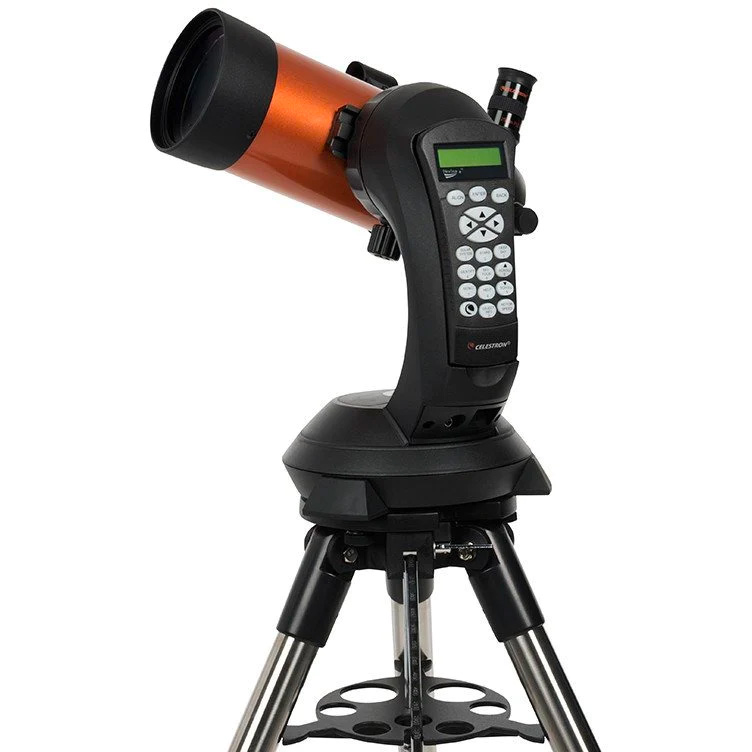
Want to see comets in the night sky? The Celestron NexStar 4SE is ideal for beginners wanting quality, reliable and quick views of celestial objects. For a more in-depth look, see our Celestron NexStar 4SE review.
Even when photographed without color, comet G3 (ATLAS) still looks stunning. This black-and-white image taken by ESO engineer Juan Beltrán on Jan. 20, 2025, shows the comet's tail extending far above its nucleus as icy particles of dust and gas are ejected behind it as material sublimates — turns from solid to gas — as G3 (ATLAS) thaws in the heat of the sun.
The comet passed and survived its closest point to the sun, known as perihelion, on Jan. 13, 2025. G3 (ATLAS) is "now moving away, and there are signs that the nucleus might have fragmented even though the tail is still visible," ESO wrote in a statement accompanying the photo.
Get the Space.com Newsletter
Breaking space news, the latest updates on rocket launches, skywatching events and more!
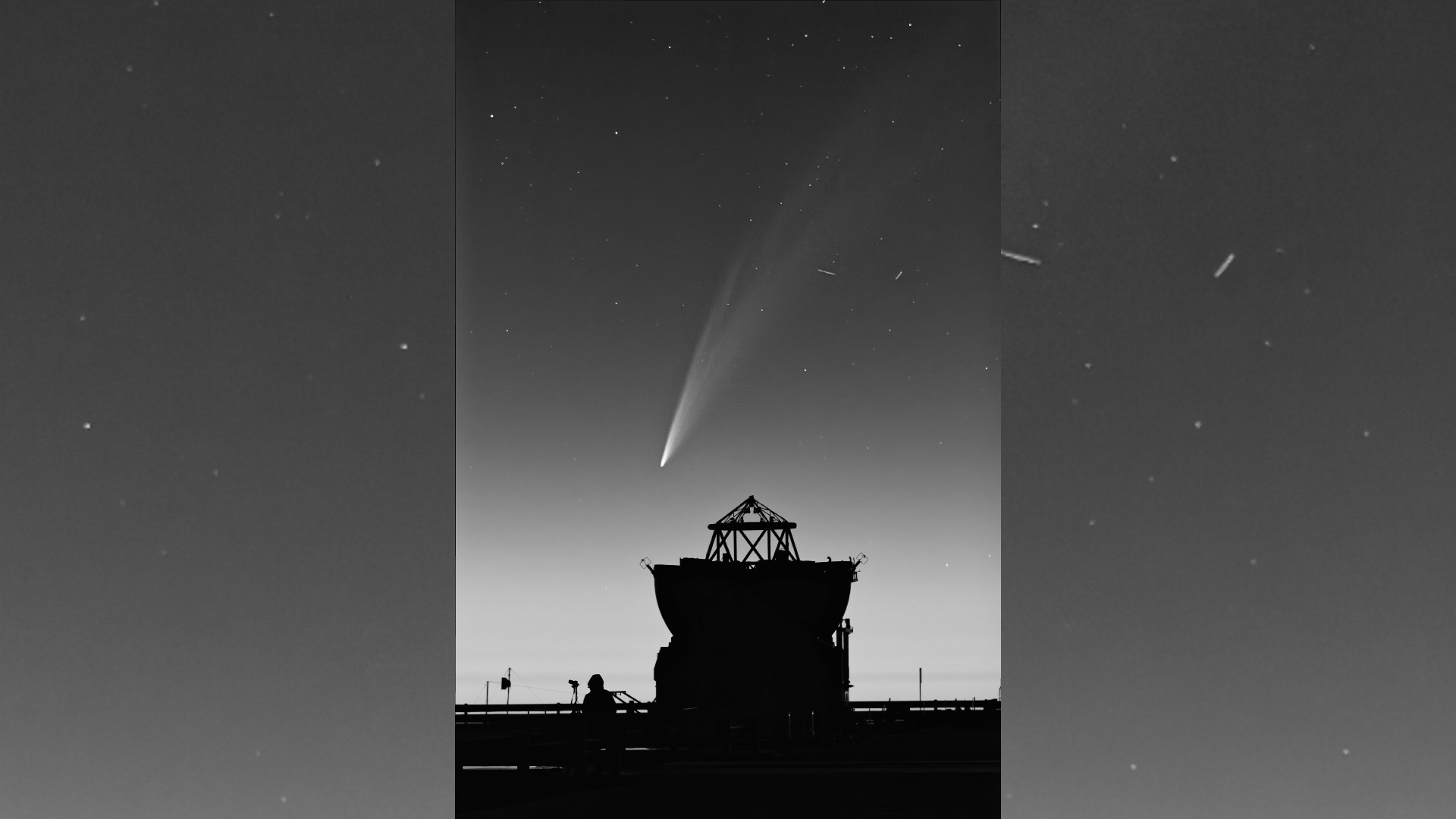
It's not just photographers here on Earth who have captured incredible images of Comet C/2024 G3 (ATLAS). NASA astronaut Don Pettit snapped a stunning photo of the icy visitor from the outer reaches of the solar system from his perch in the cupola on the International Space Station.
The joint NASA/ESA Solar and Heliospheric Observatory also watched as the comet approached the sun between Jan. 11 and Jan. 13.
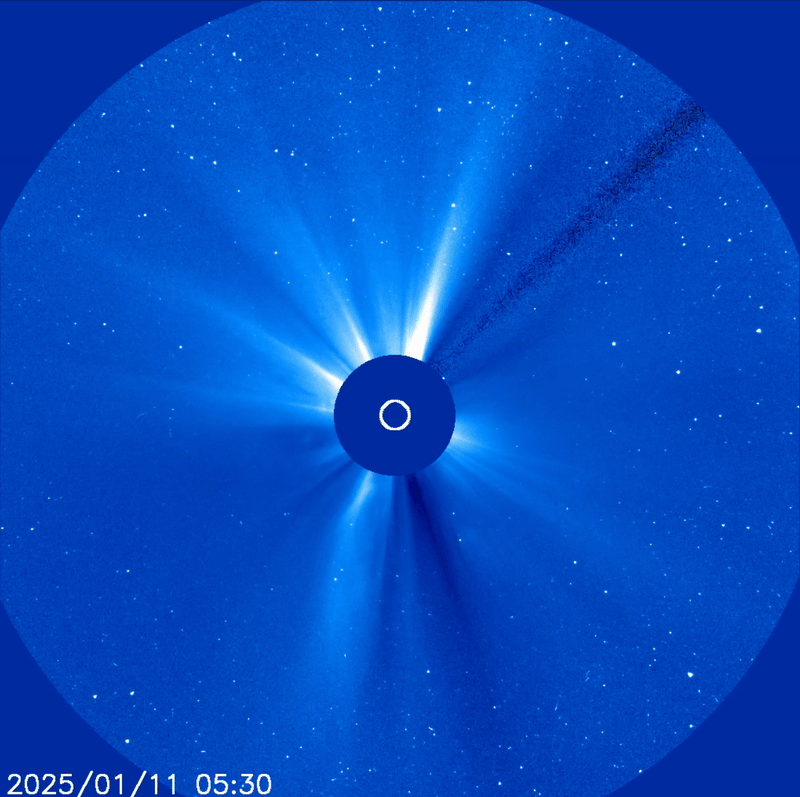
Want to hunt comets on your own? Be sure to look at our guides on the best telescopes and best binoculars to help you find the optics you need. And if you want to try your hand at taking your own comet pictures, check out our guide on how to photograph comets.
Join our Space Forums to keep talking space on the latest missions, night sky and more! And if you have a news tip, correction or comment, let us know at: community@space.com.

Brett is curious about emerging aerospace technologies, alternative launch concepts, military space developments and uncrewed aircraft systems. Brett's work has appeared on Scientific American, The War Zone, Popular Science, the History Channel, Science Discovery and more. Brett has English degrees from Clemson University and the University of North Carolina at Charlotte. In his free time, Brett enjoys skywatching throughout the dark skies of the Appalachian mountains.
